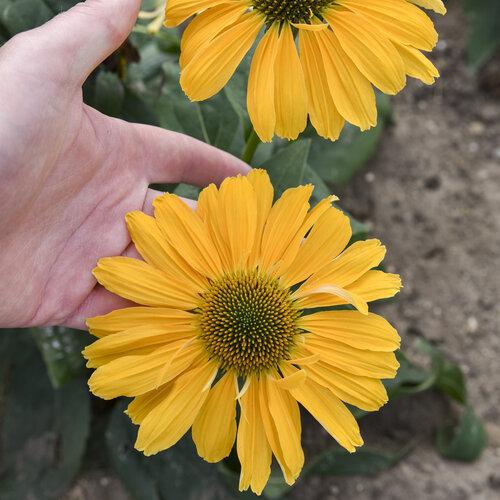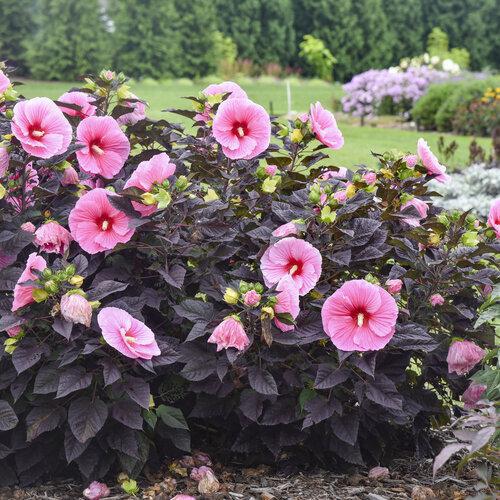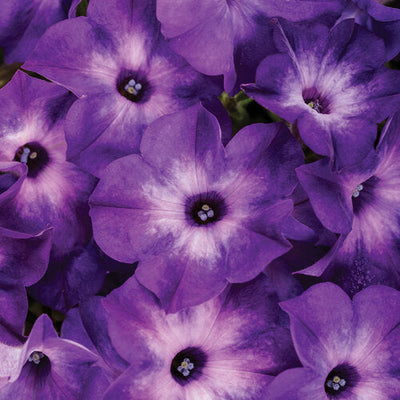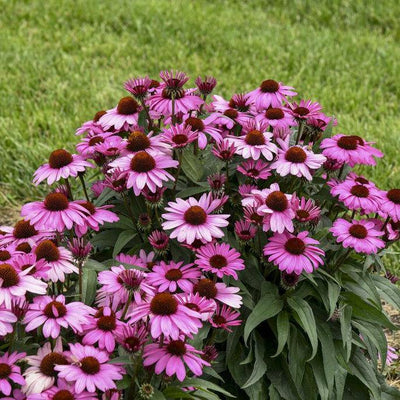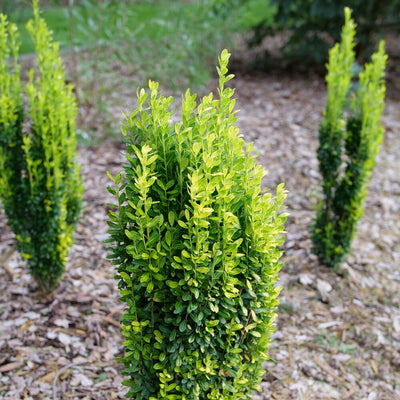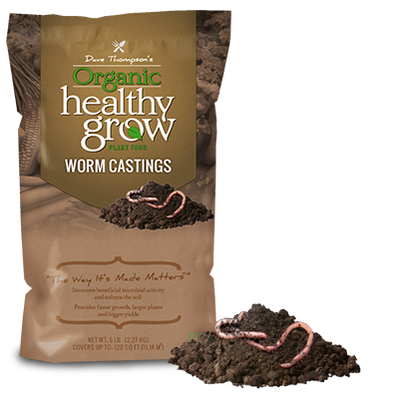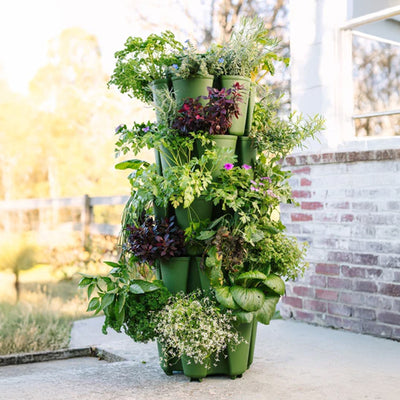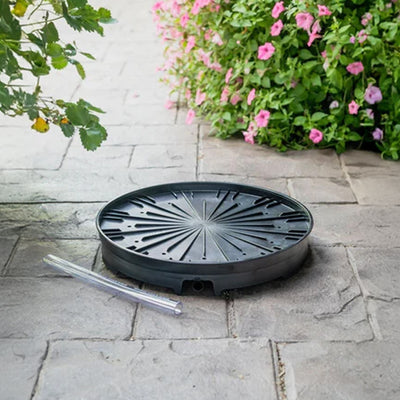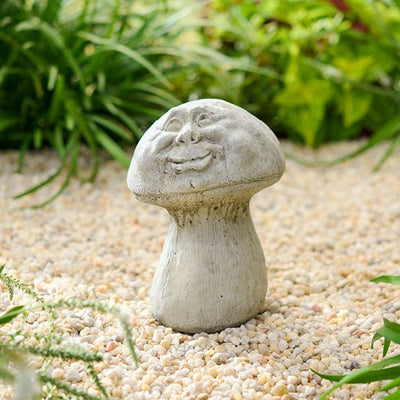Ask Jenny: How To Get Beautiful Camellia Blooms
Video Transcript
Hey friends, welcome to Gardening with Creekside. Today, we are doing another episode in the series Ask Jenny. This is a series where you can submit your gardening questions. Whatever kind of gardening questions you may have, just list them in the comments below, whether you're watching on YouTube or Facebook. We will take those questions and we will do a video, an episode answering your questions. This, I think, is the third in the series, so you can go back and check out the first two in this series. This is a lot of fun. I think this is a great way for us to, you know, "iron sharpens iron," right? And that is what we are doing here on this Ask Jenny episode.
Today's episode of Ask Jenny is dealing with Camellias. On Facebook, Nancy sent this question: "How to get more and larger blooms on Camellia bushes about four years old?" And then Mary chimed in and said, "And also, when do we fertilize them?" So this is a perfect segment to do because, of course, Camellias are one of those iconic Southern shrubs that give us stunning flowers in the fall and in the winter. I am standing here along our Creek bank. Right behind me, we have a newly planted, when I say "new," a year-old planted hedge of Camellias. After we go through this little segment, I'm going to show you how I care for them to ensure that I'm going to get beautiful growth on my Camellias this coming year. So we'll do that, but first, we're going to get into the nitty-gritty. We're going to have a little school time. So feel free to grab your gardening journal and take notes. As always, with this Ask Jenny segment, at the end, we will do kind of the Reader's Digest, the Cliff Notes version of all of my tips to give you.
Camellias are, again, those iconic Southern shrubs. Typically, the coldest that I have seen a Camellia go is up to Zone 6, and then, of course, they love those warmer zones. Here in the United States, we typically will have two different types of Camellias that we have in our gardens. We have sasanquas and we have japonicas. Sasanquas are going to be those Camellias that bloom in the fall. So it could be, depending on where you are, it could start in September, October, and then go through December. And then we have japonicas. Japonicas are the ones that come in later, usually in the winter. So it could be January, February, through March. So that is the main difference. The easiest way to physically tell the difference between a sasanqua and a japonica: sasanqua leaves are going to be much smaller than a japonica. So if you have two of them close together, the sasanqua will have much smaller leaves, and japonicas will have a nice, big leaf on them. Historically, sasanquas will grow faster, but their ultimate size, their mature size, is going to be smaller than a japonica. Japonicas tend to grow a little bit slower, but ultimately, their mature size is going to be much bigger.
Now, now that we have the difference between the two, we're going to talk about how you care for them and how do you ensure that you get the biggest blooms that you possibly can get on your beautiful Camellias. Now, we're going to start from the very basics. So the best time to plant your Camellias is going to be in the fall or the early spring. It's all going to depend on where you live. If you are like me and you are in a warmer zone, I am in 8A, the best time to plant your Camellias is going to be in the fall and even in the winter because, in North Carolina, we are historically very mild in our winters. So I can even plant Camellias in the winter. I'm going to plant one up at the chicken coop. So that is the best time to do that. Why? Well, just like with any other shrub here in the South, we want to get them well-established before the heat of the summer hits. We want those roots to get nice and happy and get really well-established before the heat. That is exactly what we did to these last year. It was a cold, rainy day when we planted these last fall. This bed is not on irrigation. I did not water them one time in the summer. I shouldn't have done that, but I'm just being honest with you, and they have buds all over them. So that is the main key to the success of these guys is I planted them in the fall, got those roots established.
Now, I said spring planting. If you are in a colder area, if you are in Zone 6 or you're in 7A, probably the better time for you to plant your Camellias is going to be that late winter, early spring because your winters are going to be more harsh. So if you are on the borderline of Camellias being too cold for you, then you're going to want to do a spring planting. That way, it avoids the harsh winter for you, and they can get nice and established during the growing season before your winter hits. So basically, whatever your harshest growing time is going to be, plant the opposite of that. So there you go.
Also, one of the most important considerations when you are figuring out where am I going to plant my Camellias is you've got to think of good soil drainage. Camellias do not like waterlogged areas. They are extremely sensitive to those areas that hold on to a lot of moisture or where water will sit. So we've got to have essential good drainage. That is essential, good water drainage. There we go, folks. So good-draining soil. Now, the next thing you want to think about is your wintertime. In the winter, are they going to be protected from that winter sun and wind? Here, along the creek bank, they are underneath a canopy of a lot of hardwood trees. They are also downwind, I guess you would say because typically, in the winter, the North is due like straight in front of me, and we get those cold, northerly winds. I've got azaleas in here. I've got other hardwoods in front of them. So they're in a bit of a windbreak. They do get some winter sun, but again, it is very mild. It comes up over my shoulder and then sets up. It comes up on my right and sets on my left. So they do get some winter sun, but they are not sitting out in the sun all day. They are most susceptible to damage caused by dry conditions when they're dormant in the winter months. So that's why keeping them protected from those harsh, dry winds in the winter is absolutely essential.
Now, talking about japonicas, japonicas tend to be more shade-loving. Sasanquas tend to be more sun-loving. Japonicas, you can grow in full shade, but they're not going to thrive. So when you're looking at, "Why is my Camellia not blooming?" Let's examine the sun. If you have a japonica, is it in too deep of shade? It really needs four to six hours of sun to produce those beautiful flower buds. On the other hand, is your japonica getting too much sun? You know it gets too much sun if it's that late afternoon sun, maybe more than six hours. You can tell that your leaves will start to turn yellow; they're burning. Then that means your japonica is getting too much sun, and that will affect how many flower buds are forming on the plant. Sasanquas tend to take more full sun, especially these new hybrids, these new cultivars that are coming out. I know the Southern Living plant collection has developed a lovely line of Camellias, the sasanqua Camellias, that can tolerate and actually need that full, full sun. So when you're looking at and shopping for your Camellias, make sure that you know what are those optimal sun conditions for that specific variety because it will differ. These japonicas, they get that four to six hours of beautiful morning sun, and then they are in the shade in the afternoon.
As for the sasanqua that are October Magic White Shi-Shi and October Magic Ruby, they are in full blazing sun all day and are absolutely covered in flowers in the fall. So make sure that you have the right sun conditions for your plant. When you are preparing your soil for planting your Camellias, Camellias love nice, rich organic material. So if you're like me and you have thick red clay, then compost is going to be a great friend of yours. Soil conditioner is going to be a great friend of yours. Soil conditioner is a kind of a fancy horticultural term, basically for aged pine bark fines. So this is the bark off of pine trees that is nice and small, fine, and aged. So it has matured some; it has begun to decompose. This provides great drainage and organic material in heavy, compacted clay soil. Or maybe you're in a brand new construction house. New construction houses have the absolute worst soil because of all the construction and the moving of soil. So if you have thick red clay or clay like I do, compost, those aged manure - make sure it is nice and aged manure - you can use that. And that soil conditioner is going to be a great way to amend your soil.
Now, when you're doing that, what you can do is, if you're going to plant one, then you're going to add 3 to 5 inches of that great organic material until it end. We used our power planter augers, and we had Land and Sea compost. We did that. If you're going to plant a big area, then go ahead and amend the whole bed because remember, those Camellia roots are going to go out. So work that compost, that soil conditioner, that great organic material about 4 feet around your plant, right? So that way, the roots can go out and find that delicious organic material and make them a very happy plant. Don't dig your hole too deep. We do not want to bury that root ball of the plant. You don't want to sink it down too far because we have red clay soil. We actually put our root ball about an inch above ground. So I dig my hole not too deep so that the root ball is sticking up about 1 inch above the natural soil line. That way, I can come back with my compost, and I create a little bit of a berm. So I bring that compost, that mulch up, and I cover that 1 inch that is exposed of the root ball. I don't bring it up on top of the root ball; I don't bring it up around the crown. Remember, Camellias hate to have waterlogged roots. So you want water to shed away. It's okay that your Camellia is sticking up above the ground. Trust me, there are tons of roots that are exposed and in contact with that soil and that water. We want water to shed away, not to come around the crown, sit around the crown; we don't want it to go too deep. It will drown, it will rot, you will kill your Camellia very, very quickly. Root rot is a very real possibility when you live in areas like we do. Literally, we just received 7 inches of rain within probably a 36-hour period. The creek is bubbling and running. I love hearing it. But 7 inches of rain, y'all. You've got to have well-drained soil or all these Camellias are going to rot. And they're doing great.
Next, watering. Watering is one of those essential key components, right? With any shrub, but especially Camellias. Once they have formed those flower buds, this is going to be the time probably where you're most likely going to lose flower buds. When is that? In the heat of the summer. So your Camellias are going to begin putting on their buds in about May or June. Once they start forming those buds, when they go through a severe drought, a severe period of high temperatures and no rain, they're going to experience bud drop. They're going to drop their flower buds. This is a natural defense of the plant. If the plant is in self-preservation mode, if it is hot and there is not enough water for that plant, they're going to drop their flower buds in order to conserve energy and put it back in the roots. So they're trying to protect themselves by dropping the flower buds. This is why it's so important, especially in the first year and whenever you go through an extreme drought and the heat of the summer, is to water your Camellias regularly. They love a good, deep soaking where you can really soak those roots once to twice a week, right? So if you notice that you've got beautiful buds on your Camellias, and you hit that heat, and all of a sudden they start turning brown and dropping, you've got to water. That's going to be the issue. I would say that's probably one of the main issues as far as people not getting beautiful flowers on their Camellias is because you think, "Oh well, I've made it this far. I've made it past the winter. I don't have to worry about it." No, make sure they get that nice, deep watering in those times of drought, once to twice a week, nice, deep soak. I did that with my White by the Gate that is in the shade garden by the driveway, and it is still covered in tons of buds. It's a japonica, so I'm still waiting on it. But the first year that I had it in the ground, I did have a lot of bud drop, and I realized I should have been watering this more this summer. I was very faithful in making sure I gave it lots of good drinks of water. I saw lots of good growth and lots of good buds on it, and they're still holding onto those buds as well.
Fertilizing. How do you fertilize your Camellias? That was one of the questions in the Ask Jenny. You've got to be careful with your fertilizer because Camellias are prone to burn. You can use a well-balanced fertilizer like a 10-10-10 on it, but use it at a very low rate. I would not recommend that because when you have those types of fertilizer, you can easily over-fertilize and burn your plant, possibly even kill the plant.
I prefer an organic slow-release fertilizer like Holly-tone. There is a much slower release, and the threat of burning or killing your plant with one of the tones is extremely low. So, you can use that Holly-tone because Chamas are acid-loving plants. Holly-tone is for those acidic-loving plants, and you can use several light applications beginning in March and then through June to encourage all of that beautiful new growth and put on some buds. You don't really want to fertilize past June because you want that new foliage to harden off and get really nice and well-established before any kind of cold weather hits in the fall. So, June would be the last time that I would apply my Holly-tone to your Chamas.
But more important than fertilizing, regular water. Regular water is going to have more results and rapid growth than a ton of fertilizer. All right, so consistent water on your Chamas is huge, and then as far as pruning, Chamas really don't need to be pruned. The only time that you're really going to want to prune them is if it was right after they bloom. So, my sasanquas, you can prune them immediately after they finish blooming or extreme early spring. I did that with my white shishis this year, and what I do is when you have what I call those rogue limbs where you just have this one crazy, whippy stem that just got really excited and just grew a ton and has outgrown the rest of the plant, I just cut it back in so that there's a nice shape to the Camellia.
These japonicas down here, I want them to grow and get huge and large. I have absolutely no plan whatsoever of ever pruning these Chamas. They will. Chamas do respond well to being pruned. You've got to make sure that you time it correctly. If you need to prune your japonicas, do it immediately after they bloom so that way you have plenty of time to get that bud set by June for your next season.
Yeah, you can. I know that people have. You know, they even bought houses where Chamas were planted right on the corner of their house. Typically, those are japonicas and they're massive. So they will severely prune them back and they always come back. So once you get your Camellia established really well, then they will probably outlive all of us. But it's just getting them nice and established in the beginning and then they are very, very happy.
So hopefully this has given you some knowledge, and knowledge is power when it comes to gardening, and that you will be able to create beautiful flowers on your Chamas for many years to come.
Now what I'm going to do is I'm going to do a little bit of maintenance on these Chamas because it is that time of year. So what we're going to do is I'm going to go through and kind of tell you, show you these Chamas and go through and tell me like what the names, the colors, the varieties, all of that great stuff. And then we are going to apply some compost, top dress some compost around these japonicas.
Last year, it was last year, 18 months ago, I can't, y'all. It all runs together. My mama and I went up to Camellia Forest in Chapel Hill, North Carolina. It is a really reputable, well-known nursery that obviously specializes in Chamas. They are a mail-order company. So if you are looking for just really beautiful, high-quality plants, then you can check them out. Of course, I always encourage you to go visit your local garden center. Sometimes I know that Chamas can be a little tricky to find and or if you're looking for a specific variety, Camellia Forest, great, great products. And they come in a range of sizes. You can get them all the way up to like three gallons at seven gallons. You have to go to the nursery to get those. They will have open houses a couple of times a year. That's what mom and I did. And man, between the two of us, we loaded up the Suburban and got tons of beautiful Camellias. So all of these Chamas came from Camellia Forest. You can check out their website. And yeah, if you're interested, give them some of your business.
So what we did is Jerry and I planted these basically in a straight line because I am thinking long-term with these japonicas. Remember, japonicas tend to be your bigger ones that are slower growing. And you can see right here what I'm talking about as far as the leaves. See how nice and big that japonica is? I put my thumb, and it is huge. A sasanqua will be about the size of my thumb. You can see that we have got lots of really pretty healthy buds on this one. I have kept all of the tags from the nursery on the plants. I need to do something a little nicer, but anyway, this is April Remembered, and it is hardy up to Zone like 6B. And it's going to be more of a white with some pink on it. So that is the first one. All of these are going to be in that white, pink, and red.
Then we have Jerry Hill. Jerry Hill, of course, I had to get Jerry Hill after my sweet husband. Jerry himself. But this, as you can tell, is a smaller plant. Now some of these were just because of the plant size. Like this was a one gallon, as compared to some of these that were three gallons. Jerry Hill is... It's on a little bit more on the struggle bus, but we still have some beautiful foliage and we have a couple of buds. It is going to be a nice, really beautiful pink shade. And yeah, so there we have Jerry Hill.
And then you can see the size difference right here. This one was a three-gallon, much, much happier plant. I always say when you're buying Chamas, try to get the biggest size that you possibly can because it really does make a big difference. Beautiful foliage on this. We've got lots of beautiful, healthy buds on it. I'm going to come down here and I'm going to take a look at my tag right here quick because I don't remember. Okay, Black Tie. Black Tie is a classic. It is a gorgeous double deep red flower on it. I mean stunning. I have a friend who bought an old house and she believes that hers is a Black Tie that is right beside her back door. Oh my gosh, y'all, just stunning. So Black Tie is a very happy Camellia for sure.
Coming down here, we have another one a little bit more on the struggle bus, in the fact that we've got some of the brown buds. Do you see how that is brown right here and then we have some right there? So this could be because of a couple of things. One, I noticed that it's happening on the front side of the plant and here on the back side, I have got some really nice healthy buds.
Yes, they're a little bit small, but they are not brown and they are not burnt, so that could be, um, the first thing that tells me is maybe that was some freeze damage because it happens on the front where it was more exposed. This is Pink Perfection, Pink Perfection, beautiful classic big double solid pink bloom on it. Um, so that could be frost damage, freeze damage on the front, backside maybe it was a little more protected, or it could be maybe there was some lack of water in that one area that's what makes me think it's not the water because it's just on the front side of the plant.
So we have Pink Perfection next. We're coming on down, and we have, um, another one that has a little bit of damage. You can see we've got some leaves right here that are burnt. That could again just be from freeze damage on that, um, so they just come off, and it's not that big of a deal, but the rest of the plant, see these beautiful buds right here? We've got lots of beautiful buds on the front. This one is Oh Tom Nudson, Tom Nudson is going to be, um, has large dark red flowers, and all the Chamas that I got, I wanted to go more cold-tolerant as I possibly could, so mine are cold up to, um, zones like 6B and 7. So at an 8A, I should be really good to go. I may have some frost and freeze damage, not frost, freeze damage on them, but overall, um, I'm not going to lose my plants due to every winter, right?
This one has something has been chewing on it obviously right, we've got some little nibbles on here, but yet we have got lots of beautiful healthy buds right here, um, that are doing really, really well. This one is, I believe, Seafoam if that's, yep, Seafoam, and Seafoam is going to be a pure white flower, just absolutely stunning.
So what I'm going to do is you notice probably that I have a bag of Land and Sea around each Camellia. So we have tons of beautiful leaf litter right here because of all these hardwood trees. So you can see all the leaves that are here. What I'm simply going to do is I have my little hand rake. I'm going to come through and on each, around each Camellia, I'm going to pull back these leaves and I'm going to put one whole bag of Land and Sea around each of those Chamas because you can see when we planted them, we still have some that Land and Sea around, but you can start to see that red clay is popping up. You can see that there are some Roots Exposed on my Camellia. So when I bring in these, um, this Land and Sea, I'm just going to very put a very light thin coat up here and put it more thick back here on the backside. And then I will take my leaves and put it back on top of the um, the compost. We, I like to leave the leaves down here because this is an area that's far away from the house, is in a much natural area right, it just makes sense, and these leaves will actually help retain some moisture for me because not on irrigation, right, and what did we talk about, consistent water is important for your Chamas. So that's what I'm going to do, I'm just going to spread out this Land and Sea, and I'll meet you back here in just a [Music] second.
All right, my friends, so that little project of giving my Chamas a nice dose of compost is complete for today, check that off the to-do list for the winner. I feel great, great uh, so what I did, of course, as you saw is I just pulled back the leaves dumped in the Land and Sea. If there were any weeds I pulled those. I had my little Felco um, cultivator worked that into the soil a little bit, not not anything rough, just worked it in, and then brought back some leaves and covered it back up. Loosely so you can't really tell especially from a distance that I was even here working on these Chamas.
I will follow my own advice and in March I will go ahead and apply my first dose of the Holly Tone fertilizer to them. I will just simply follow the instructions on the bag as far as the dosage and just let these babies go. I do want to come in and mulch this flower bed. This bed has not been mulched at all, it is just the leaf litter that has fallen when we cleaned this area up that same day that we planted these Chamas, um, we're kind to maintain and keep the creek Bank open so I do want to come in and add a nice layer of like the hardwood mulch. We'll do that probably sometime late winter, early spring because remember back here in the back we are going to be hosting uh, the wedding for Alyssa and her wedding reception is going to be right here so I want this bed to be nice and neat and simply just adding mulch to the top of this flower bed will ensure that it looks neat and tidy and it will help suppress weeds around my Chamas and hold in more moisture in the summertime.
So if you have questions gardening questions that you would like me to answer just simply put them in the comments below I see all of those comments and uh, I will pick great questions that I think will uh, make a great video and apply to a lot of people and answer a bunch of people's questions and uh, yeah so I appreciate you submitting your gardening questions if I can't get some of these are going to be like seasonal somebody was asking asking about creating really full beautiful Disney-worthy containers I really want to do that but I will do that more in the spring when I have those components those annual components as to doing it now so just because I don't answer it right away doesn't mean that I'm not saving them for later as always we so appreciate you thanks so much for GR with Creekside y'all have a great day we'll see you in the next video bye friends here in the United States we typically will have two different types of Chamas that we have in our Gardens we have Sanqua and we have japonicas so squas are going to be those Chamas that bloom in the fall so it could be depending on where you are it could start in say September October and then go through December and then we have japonicas japonicas are the ones that come in later anywhere we want to say winter right so it could be January February through March so that is the main [Music] [Music] difference [Music] also um one of the most important considerations when you are figuring out where am I going to plant my Chamas is you've got to think of good soil drainage all right Chamas do not do not like waterlogged areas they are extremely sensitive to those really areas that hold on to a lot of moisture or where water will sit so we've got to have essential good drainage that is essential essential good water drainage there we go folks don't dig your hole too deep right we do not want to bury that whole root ball of the plant you don't want to sink it down too far because we have red clay soil we actually put um our root ball about an inch above ground so I dig my hole not too deep so that the root ball is sticking up about 1 in above the natural soil line that way I can come back with my compost and I create a little bit of a burn so I bring that compost that mulch up and I and I cover that one inch that is that is exposed of the root ball I don't bring it up on top of the root ball I don't bring it up around the crown remember Chamas hate to have waterlogged uh roots.
Recent Posts
-
The Best Rabbit Resistant Plants For Your Garden
-
Creating Colorful Winter Beds in the Signature Garden
-
Explore the Hidden Beauty of the Privacy Berm in Winter
-
Proven Winners Signature Garden: What Lies Ahead in 2024?
-
Exciting New Preparations for 2024
-
Ask Jenny: How To Get Beautiful Camellia Blooms
-
Planting a Mixed Screen At the Signature Garden
-
My Top 10 All-Time Favorite Proven Winner Annuals
Related Articles
